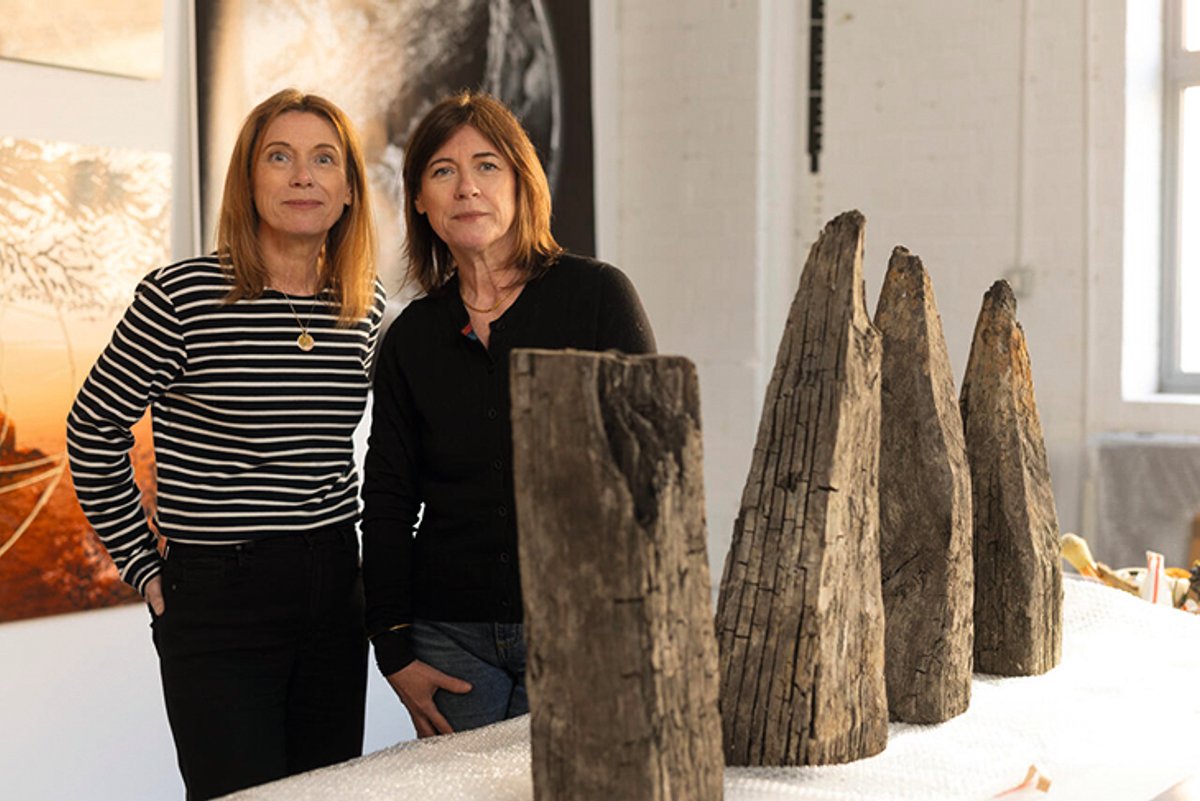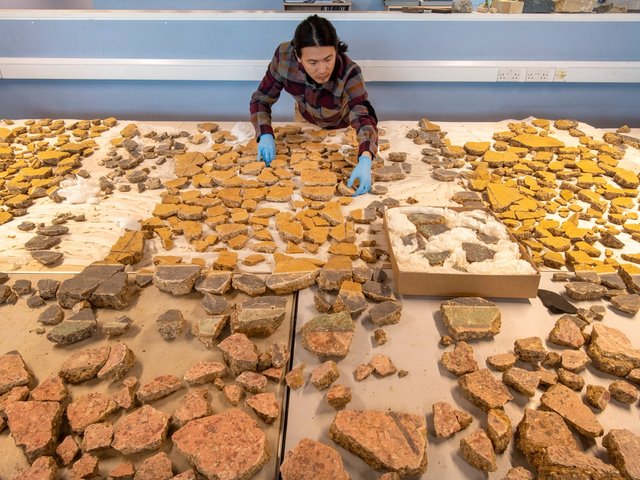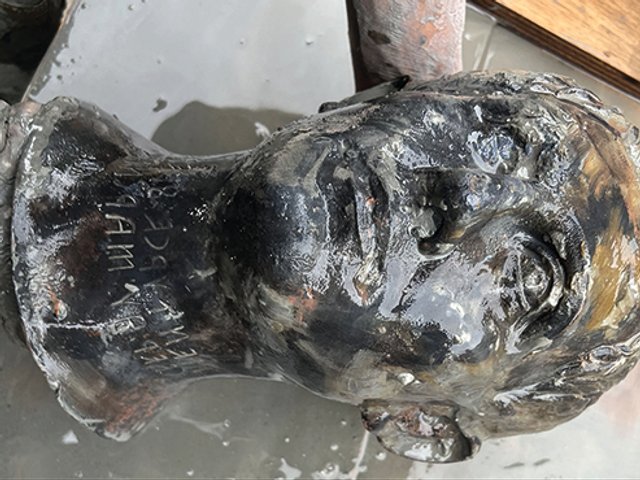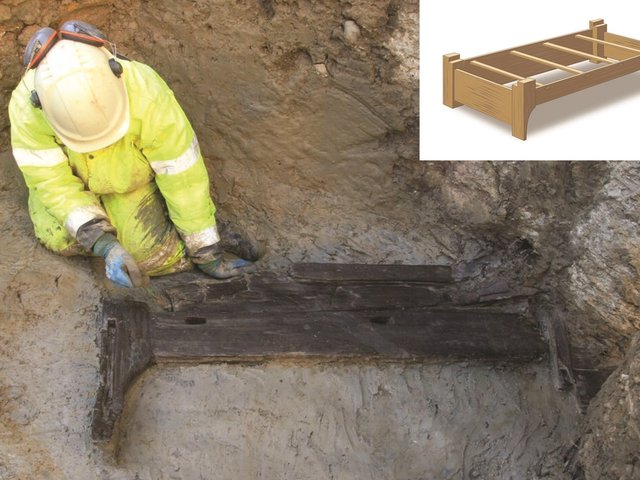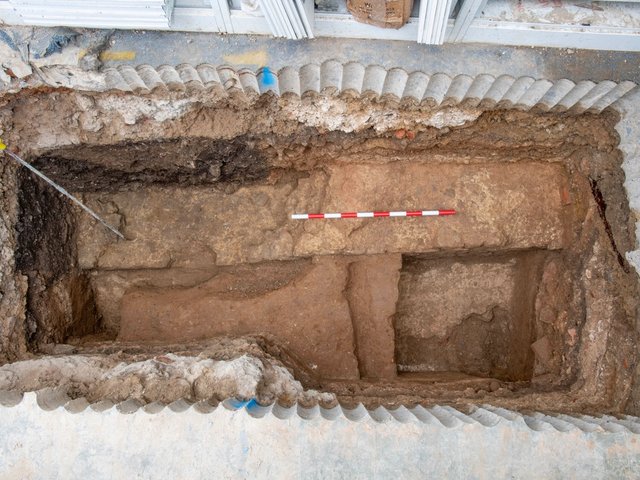London’s rivers—the Thames, the Lea, the Wandle—are a source of endless fascination. But its lost rivers are even more intriguing, especially the Walbrook. This northerly tributary, which emerges somewhere around Shoreditch and roughly follows what is now the A10 to enter the Thames near Cannon Street, is thought to have marked the western limit of the first Roman settlement. It is famous for the many Roman skulls found in its bed.
From 17 July, visitors to London Mithraeum Bloomberg Space will have a thrillingly tactile encounter with the Walbrook’s hidden depths. In the show Performance of Entrapment, the artist twins Jane and Louise Wilson are installing several 2,000-year-old oak stakes along with films and layered works.
When the Museum of London Archaeology (Mola) undertook extensive excavations from 2012 to 2014 at Bloomberg’s European headquarters, it unearthed around 14,000 Roman artefacts, 70,000 pottery shards and an unseemly amount of butchered animal bone. It also found a vast quantity of engineered, utilitarian timber, in superlative condition.
“What was amazing about the Walbrook river valley, as a sort of archaeological feature, is that it’s often still wet,” says Sophie Jackson, Mola’s director of developer services. “The river has gone away, but there’s still water in these reclamation deposits, and the water keeps out oxygen, which would otherwise cause decay.”
The first dated evidence for Londinium was dug up at the 1 Poultry site in 1994: a conduit made of wood harvested in AD47. The reason the Bloomberg site has yielded so many interesting findings is that as the Roman settlement grew, its authorities kept trying to reclaim land from the river by “filling in and tidying up” its boggy surrounds, Jackson says. First, they lined its banks with timber revetments to stop erosion and flattened a lot of ground on which they built structures. Subsequent flooding saw them repeatedly bring in rubbish from one of the dumps in the city to raise and stabilise the ground. They also built a bridge and road over it, of which the Wilsons’ stakes are surviving components.
Timbers dated to first century AD
The excellent condition of the timbers has made it possible to date them to AD50-80. They were cut from trees that were 400 to 700 years old, felled in the oak forests that once covered swathes of Kent and what is now Greater London. This in turn has made it possible to date the layers of rubbish. “And that rubbish tells us who was in London,” Jackson says. In the early years, the people arriving were from Gaul (western Europe). “Very quickly that changes and you get the more local, Iron Age, native British population moving in and becoming part of this population—becoming Roman,” she says.
It is extraordinary that once the archaeologists have weighed, studied and recorded all these ancient pieces, most of them go in the bin. “It’s just too much stuff, and it’s not stable,” Jackson says. As soon as water-logged timber is removed from the preserving vacuum of clay, the only way to maintain its integrity is to replace the water with polyethylene glycol. The team did keep some pieces aside for contemporary artists in the Bloomberg programme. “What’s lovely is the reaction of the twins to getting this wood,” she says. “I don’t think I’ve ever seen anyone be quite so enthusiastic.”
The Wilsons first put fragments of the timbers under a scanning electron microscope, which resulted in otherworldly images; samples of moments that haven’t been seen for 2,000 years. The excitement, they say, comes simply from the timbers still being around at all: “They feel totemic.”
• Jane and Louise Wilson: Performance of Entrapment, London Mithraeum Bloomberg Space, 17 July-1 January 2026


